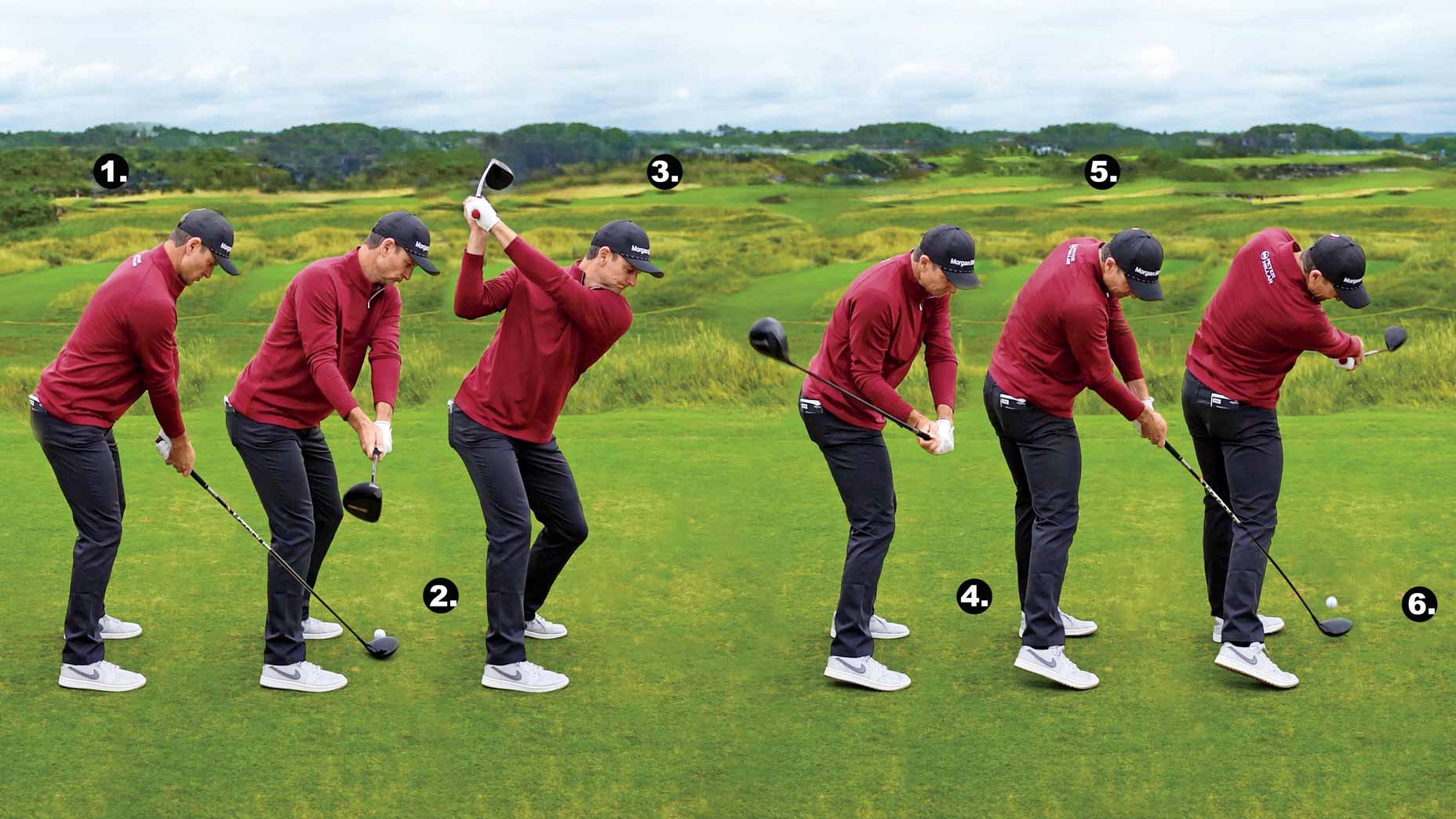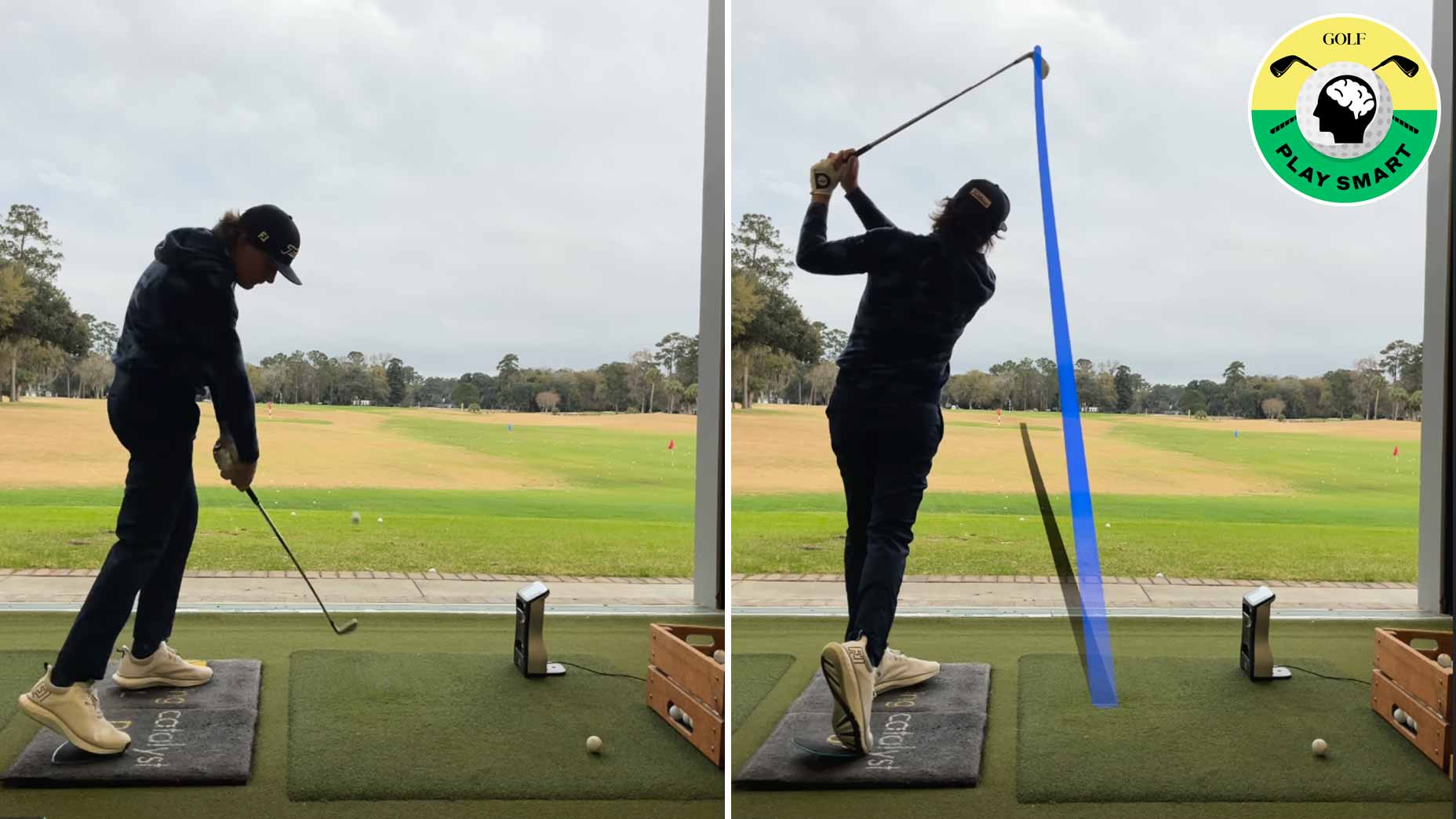The nice thing about being good at course management is that it makes you look better than you actually are. You can hit a bad shot and still avoid disaster if you aim in the right place. Of course, the opposite is true if you’re bad at course management. You could hit a perfectly-executed shot, but if it’s with the wrong club, it’ll seem like a bad shot.
Good course management — and by that I mean, knowing the right club to hit and a good target to aim at — is what makes this game of misses actually playable, and golf the best game ever created. Because it’s the furthest from a one-dimensional contest there is.
Cameron Smith didn’t have his best stuff on Monday at the Players Championship. If you have your best stuff, you don’t lose more than five shots off the tee to field over the course of the tournament. And TPC Sawgrass in sketchy weather is a really bad place to not have your best stuff. But the combination of a blazing-hot putter and some wily course management meant he still walked away with the trophy (and $3.6 million!). His shot into the 17th green on Monday afternoon was the perfect encapsulation of both these things, and there’s a lot we can learn from it.
So let’s break it down.
In the moment, Smith’s shot was lavished with the kind of shallow analysis that makes for good sound bites, which is a shame, because it actually overshadows the true genius of this shot: That it was decidedly imperfect, but led to a clutch birdie anyway.
That, by the way, is by Smith’s own admission:
“I’d be lying if I said I was aiming there,” Smith said after his round. “It drifted right and then held its line at the end … heart was in the throat there for a second.”
ICE IN HIS VEINS
— PGA TOUR (@PGATOUR) March 14, 2022
Cameron Smith went flag hunting at 17 😮 pic.twitter.com/NsAmFd7GYu
The pin on Monday was in its usual final-round spot — flush against the right side of the green, 14 paces from the front and three yards from the right edge. The wind, for its part, was gusting slightly from right-to-left.
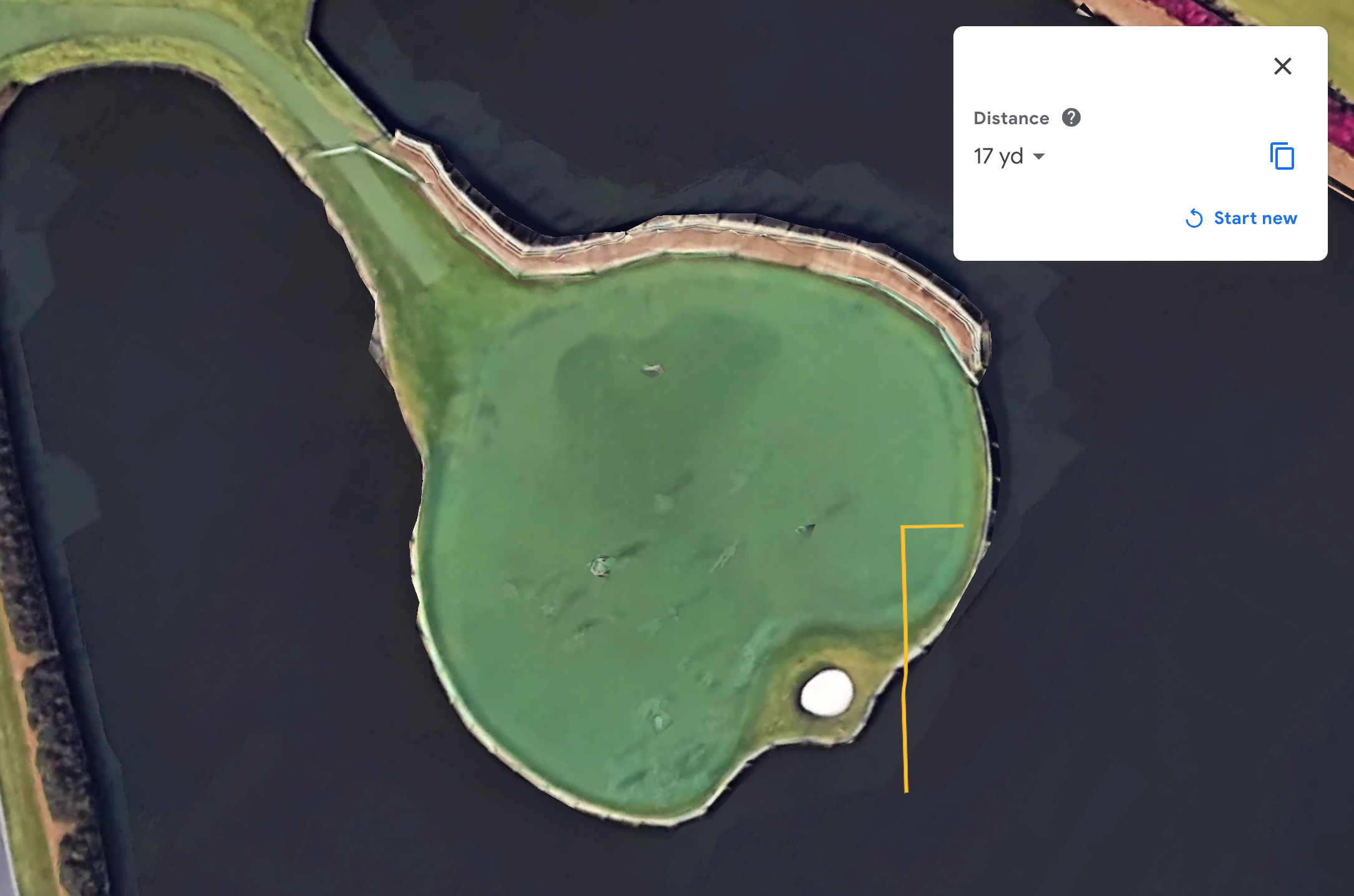
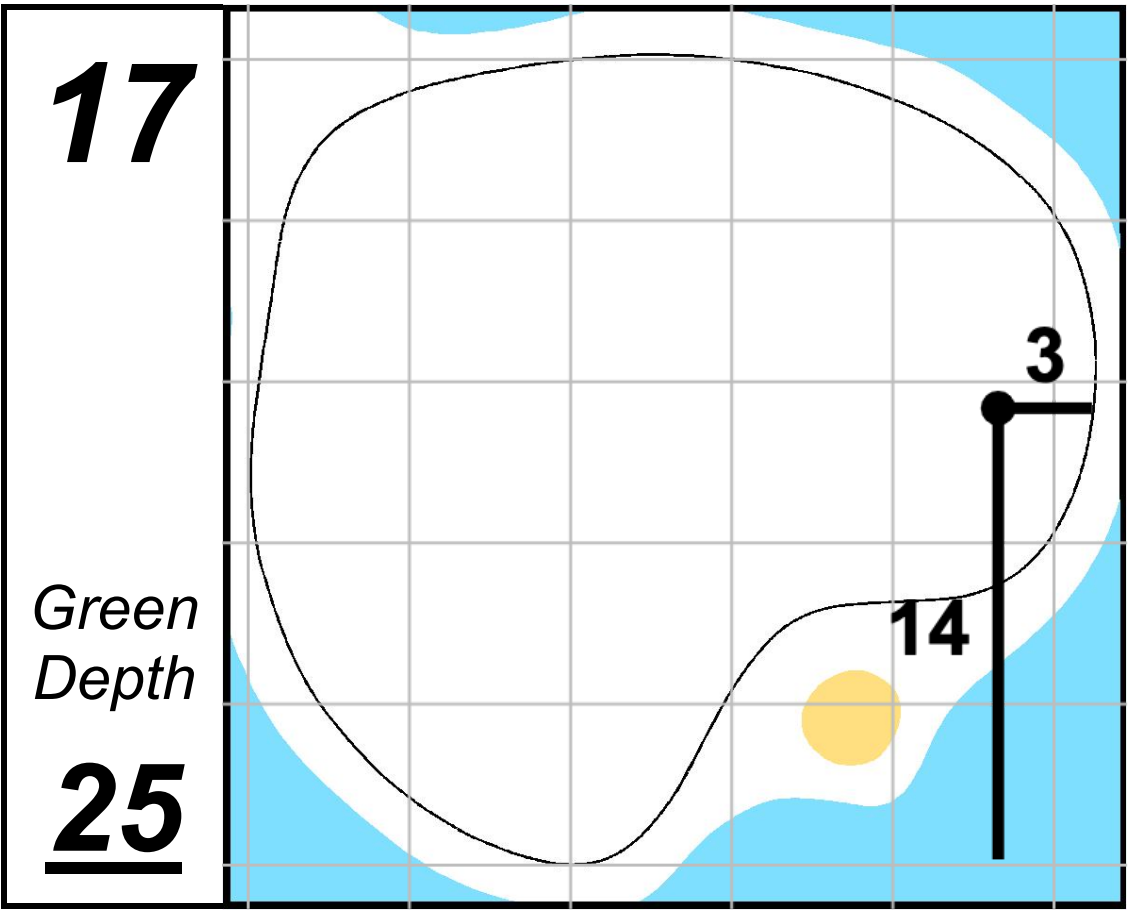
Smith said afterwards that he was “probably aiming 10 feet left” of the pin, which was a bit of a throwaway comment that shouldn’t taken too literally. He may well have been aiming more towards the center than that, but he also said he was expecting the wind to pull it back towards the center (“I thought the wind was going to kind of hold it up for most of the way”). Either way, taking his word for it, 10 feet left of pin suggests he seemed to want his ball to end somewhere on this line, or a little left of it if the wind kicked up.
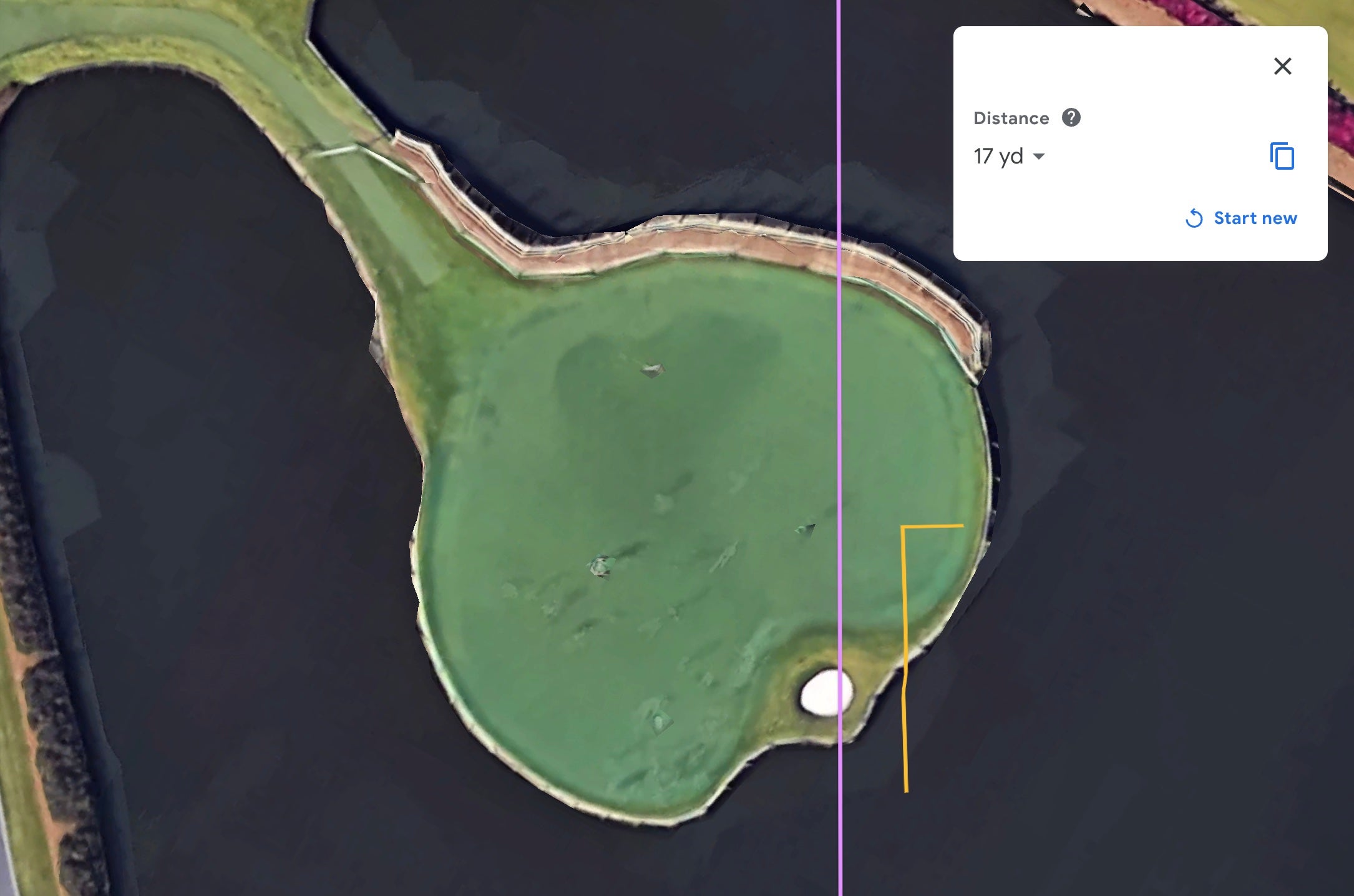
That may still seem like a really aggressive line to take with the tournament in the balance, and perhaps it would’ve been if the 17th green was nice and flat. But it’s not. As we can see courtesy of this nifty graphic from our affiliate company Golf Logix, the green is effectively split in two by a spine that runs down the middle of it. You want to be on whatever side of the spine the pin is on, because the green will funnel it in that direction. If you’re on the wrong side of it, the green will funnel your ball into impossible two-putt territory.
All of which is to say, Smith was essentially aiming as far left as he could’ve without ending on the wrong side of the ridge.
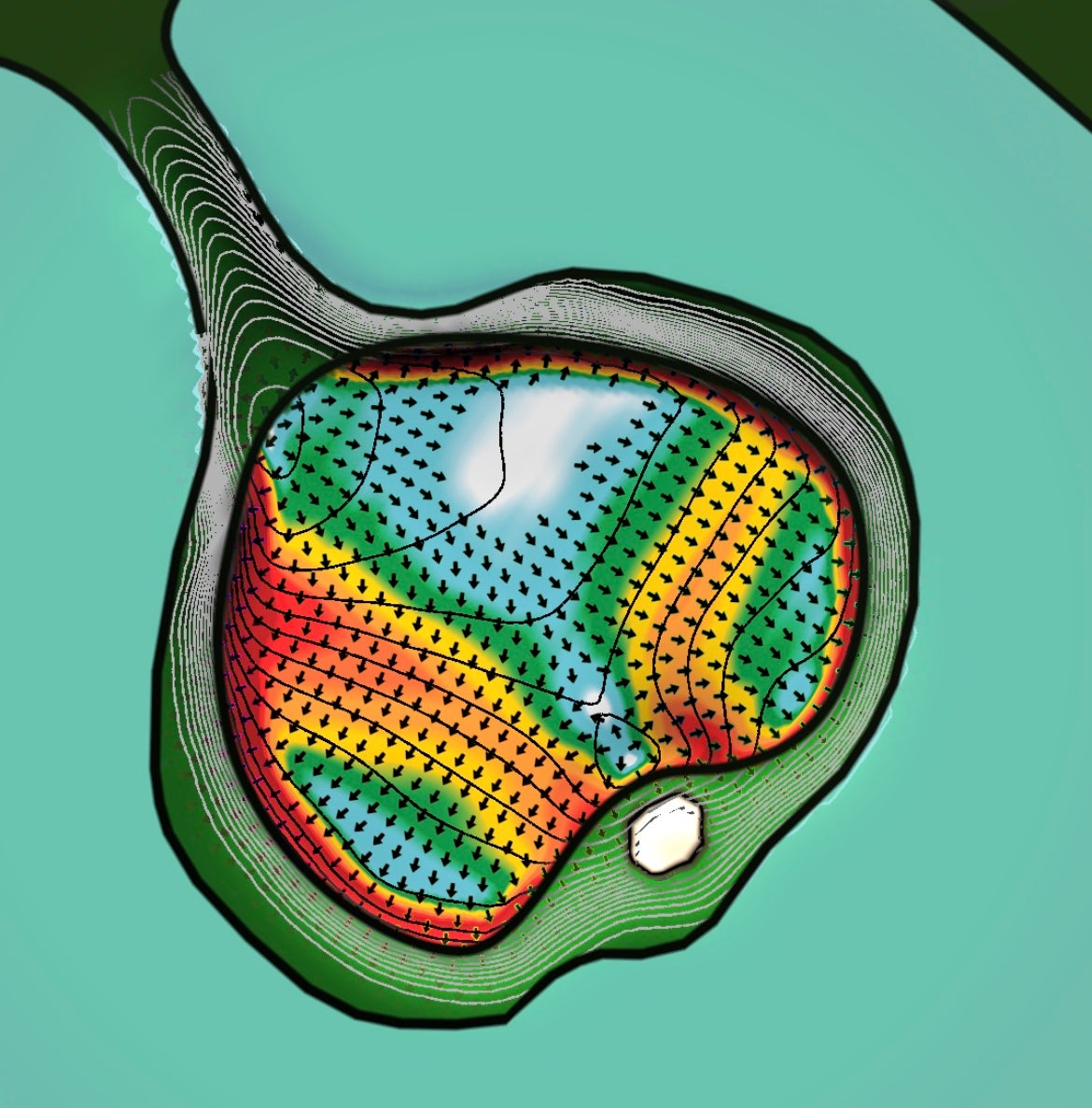
Smith also, as was mentioned on the broadcast, hit more club that most others on that hole: A knockdown 9-iron, whereas most were hitting a full pitching wedge. It means the ideal spot for Smith, if he could walk onto the green and drop his ball there, wouldn’t just be left of the pin but past the pin, almost to the high point of the green, where he was presumably hoping the slope would help funnel his ball towards the pin.
Again, it’s pretty much the safest possible spot you could choose on the green with the Sunday hole location.

And what happened next?
Smith said he “struck the ball really well,” but left the clubface open. It’s a miss that usually misses short-right, and it did for Smith, too. But because he was trying to hit a shot long left of the pin, his short right miss ended just right of the hole, and into the history books as a clutch shot of heroic magnitude. Had he taken dead aim at this pin and hit the same shot, Anirban Lahiri would’ve been your 2022 Players Championship winner, and Cameron Smith would’ve been about $1.4 million poorer for it.
That’s the value of good course management. And a prize befitting the man who mastered it at TPC Sawgrass last week.
THIS👏IS👏WHY👏YOU👏AIM👏AT👏THE👏MIDDLE👏OF👏GREENS👏
— LKD (@LukeKerrDineen) March 14, 2022
99% sure Cameron Smith wasn't aiming anywhere near this pin. But when you accidentally hit a block cut with the tournament on the line, it looks cool and you get to pretend like it was on purposepic.twitter.com/CkOY6xAD82


